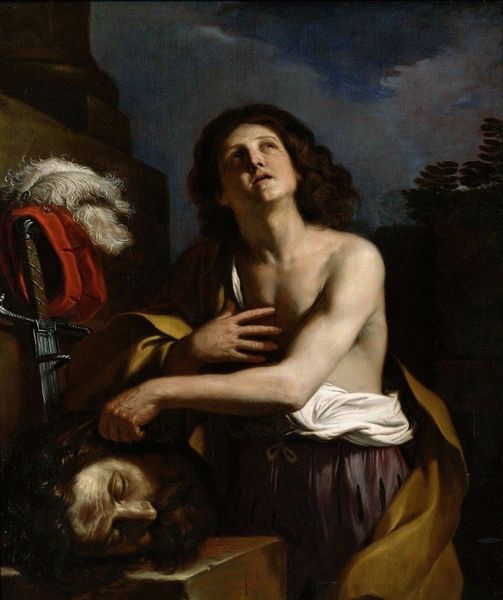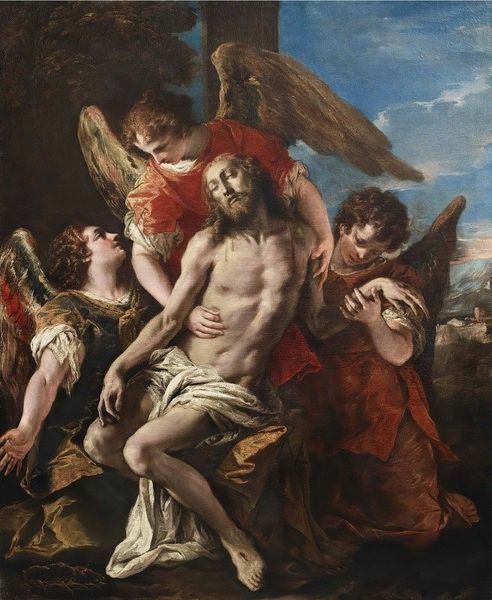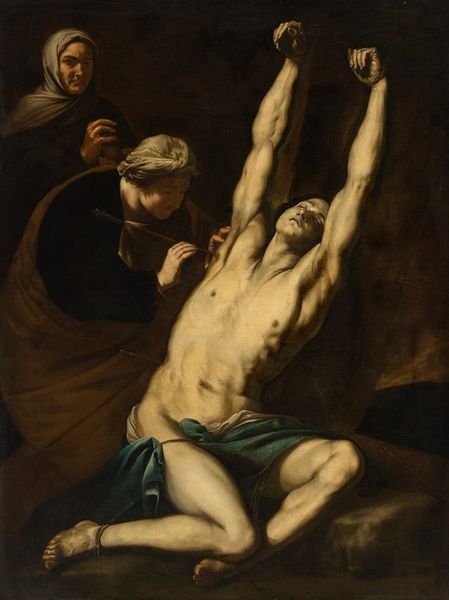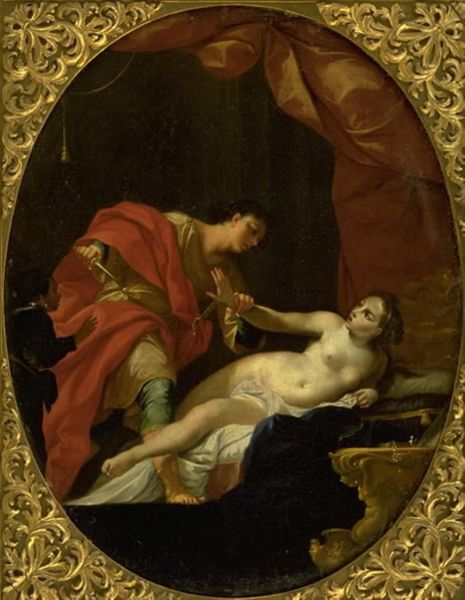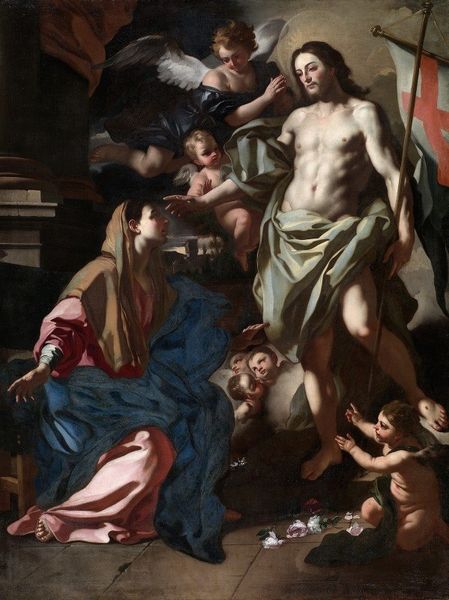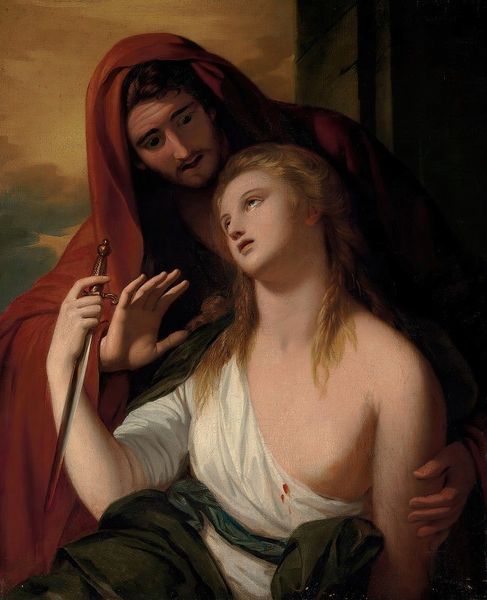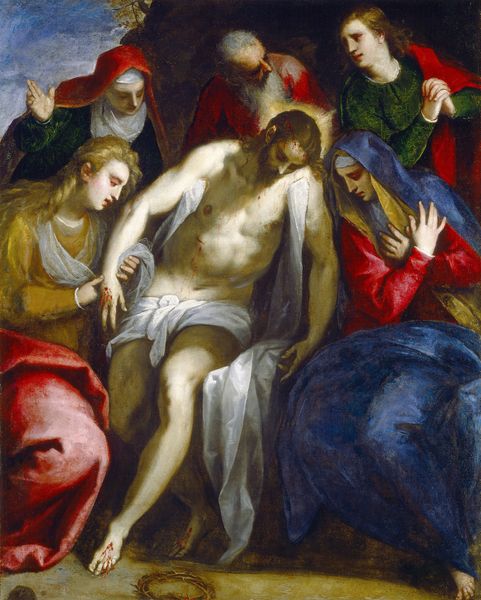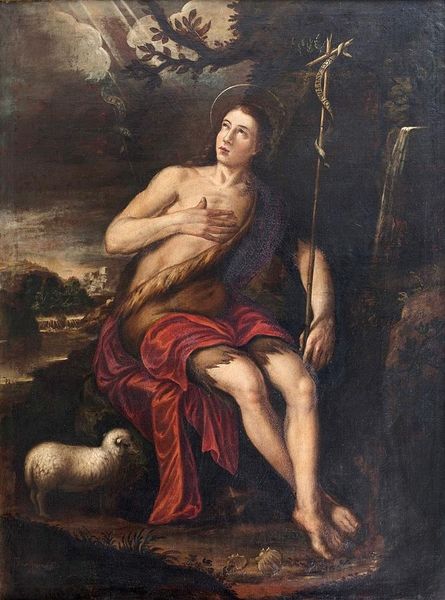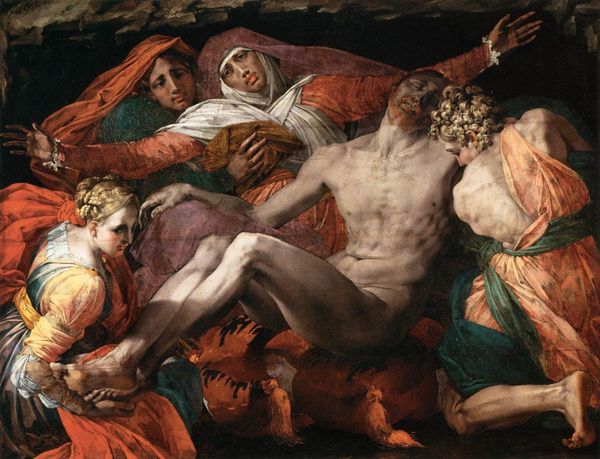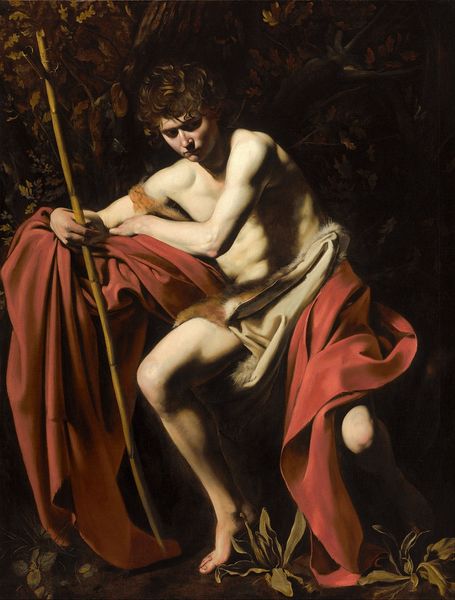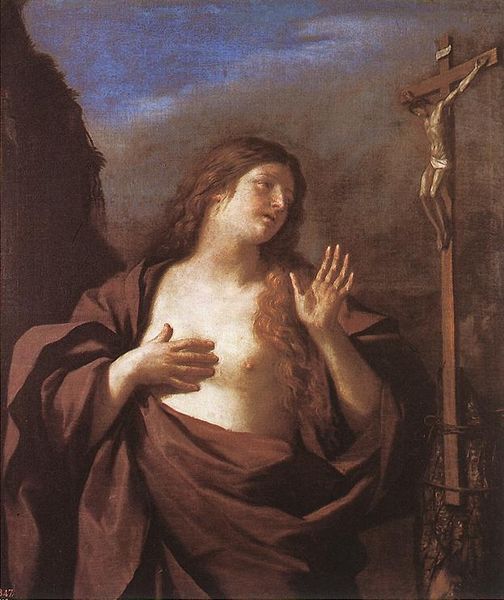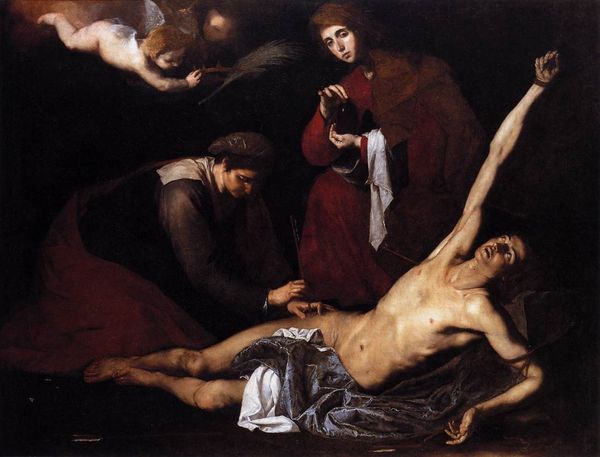
oil-paint
#
portrait
#
baroque
#
oil-paint
#
oil painting
#
portrait head and shoulder
#
chiaroscuro
#
history-painting
Copyright: Public Domain: Artvee
Curator: Here we have "Saint John the Baptist," an oil painting attributed to Jusepe de Ribera. It’s quite a compelling piece, especially in its raw emotion. Editor: My first thought? Dramatic. Utterly, intensely dramatic. The way the red fabric cascades, the somber look… it's like he’s anticipating something monumental and slightly terrifying. Curator: Ribera, often working in Naples, was known for his use of chiaroscuro. Look at how the light catches the saint’s skin against that dark, earthy background. The sharp contrasts serve not only to highlight his form, but they are integral to setting that dramatic tone. Editor: Absolutely! And the brushstrokes... they're so visible, so deliberately rough. It's almost like he’s building up the figure from the very dirt, reinforcing this idea of a raw, almost primal existence. I wonder what the conditions of the time might suggest here. Were depictions of sainthood meant to inspire austerity among commoners? Curator: That's an excellent point. Consider the socio-political climate of Ribera’s time. We're looking at 17th-century Italy. The Council of Trent had dictated a return to more simplified and emotionally engaging religious art to counteract the Reformation. Ribera’s naturalism served to bring religious figures closer to the everyday lives of people, particularly lower classes. Editor: I’m captivated by how human he makes him look. This isn’t some glorified, ethereal being. He's got weight, sadness. And that redness… is it supposed to represent the violence surrounding the beheading later on? The color really saturates my interpretation of the image, suggesting he knew the path that awaited him. Curator: The materiality of the oil paint contributes greatly. Ribera layered his pigments, creating depth and texture that draw the viewer in. Consider, too, the significance of Saint John in this historical context as well. He signifies prophecy, sacrifice, and even resistance against temporal authority. These resonate with the artist’s audience who were likely facing oppression from colonial powers and economic inequality. Editor: Thinking about those artistic and societal implications, seeing it all come together like that really gives me a fresh insight. Thank you. Curator: My pleasure! Thinking through the history and artistry is all that makes analyzing great art so exciting!
Comments
No comments
Be the first to comment and join the conversation on the ultimate creative platform.
